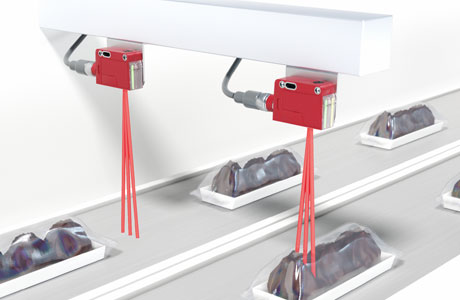Key Takeaway
Some key terms in photoelectric sensor terminology include through-beam, retro-reflective, and diffuse sensors. A through-beam sensor uses separate emitter and receiver units, detecting objects when the light beam is interrupted. A retro-reflective sensor uses a reflector to send light back to the sensor, making it ideal for shorter ranges.
Other important terms include sensitivity, response time, and range, which determine how quickly and accurately the sensor detects objects. Understanding these terms is crucial for choosing the right sensor for your application.
Essential Terminology for Understanding Photoelectric Sensors
When dealing with photoelectric sensors, you’ll hear terms like emitter, receiver, and diffuse mode frequently. But what do they mean in practice?
Emitter and Receiver: In a photoelectric sensor, the emitter is the part that emits light, typically infrared or visible, and the receiver detects this light. Depending on how the sensor is set up, the receiver can be separate or housed in the same unit.
Diffuse Mode: This is one of the common operating modes of a sensor. In this mode, the sensor emits light and detects it when it reflects back from the target. Think of it as an automatic door opener at a mall – the door detects you through reflected light.
Through-beam Sensor: Here, the emitter and receiver are separate units. The light beam passes uninterrupted until a target blocks it, creating a signal. This mode offers higher sensitivity and longer detection ranges.
Understanding these basic terms gives you a strong foundation. They’ll pop up regularly in datasheets and discussions with your team, so having a clear idea from the start will help.

How to Decode Technical Terms in Photoelectric Sensor Datasheets
One of the first technical terms that you’ll come across in photoelectric sensor datasheets is the detection range. This term indicates the maximum distance at which the sensor can reliably detect an object. It’s an important factor in determining the right sensor for your application. But there’s more to it—just understanding the detection range isn’t enough. You’ll also find another term called the operating range, which usually refers to a shorter, recommended working distance that ensures safety and reliability in the sensor’s performance.
Think of it this way: the detection range tells you what the sensor can do under ideal conditions, while the operating range tells you what the sensor should do in real-world industrial applications. For instance, if you’re working in an environment with varying temperatures or dust, following the operating range ensures consistent and reliable detection. Knowing the difference between these two can help prevent sensor failures and improve overall system efficiency.
Understanding Sensor Parameters: Sensitivity, Range, Response Time
Response time is a critical term in photoelectric sensor datasheets, especially if you’re dealing with fast-moving industrial processes. It refers to the time it takes for the sensor to react once an object enters or exits its detection field. The shorter the response time, the quicker the sensor reacts, which is crucial in high-speed environments such as conveyor belts in warehouses or production lines.
Imagine you’re running a high-speed manufacturing line where every millisecond counts. If the sensor’s response time is too slow, it could result in missed detections or faulty operations, leading to costly mistakes. On the other hand, a sensor with a fast response time ensures smooth operations, reducing errors and preventing delays. Understanding this term helps you choose the right sensor for the job, especially in environments where precision and speed are vital.
Practical Examples of Key Photoelectric Sensor Terms in Use
Hysteresis is one of those technical terms that might sound trivial but can significantly affect your sensor’s performance in certain applications. It refers to the difference between the point where the sensor detects an object and where it stops detecting it as the object moves away. Essentially, hysteresis prevents the sensor from constantly switching on and off when an object is close to its detection range, which can happen in unstable conditions.
In precision-based applications, such as robotic arms or automated sorting systems, too much hysteresis can lead to inaccurate readings and performance issues. By minimizing hysteresis, you can ensure more stable sensor behavior, which directly impacts your system’s accuracy and reliability. Understanding and managing hysteresis is crucial when working in industries that demand precision and consistency in operations.
Why Learning These Terms is Crucial for Effective Sensor Use
Sensitivity is a term you’ll see often, and it’s essential for determining how well a sensor can detect small changes in light intensity. This is particularly useful in environments with fluctuating lighting conditions, where a highly sensitive sensor will still perform optimally. For example, in outdoor applications or areas with mixed lighting, sensitivity ensures the sensor can detect objects without being affected by ambient light.
But it’s not just about detecting light. Sensitivity also plays a role in determining how accurate the sensor is in distinguishing between objects of different sizes or reflectivity. For instance, in a warehouse automation system, where both large and small packages need to be detected accurately, sensitivity ensures that the sensor responds appropriately, regardless of object size or light conditions. Understanding this term allows you to optimize your sensor setup for accurate and reliable performance in any environment.
Conclusion
By familiarizing yourself with the essential terminology of photoelectric sensors, you’re setting yourself up for success. Whether it’s selecting the right sensor for a task or diagnosing issues, having this vocabulary at your fingertips will make you more efficient and confident in your work. Remember, it’s not just about memorizing definitions – it’s about understanding how these terms apply to real-world scenarios. Once you have that, you’re well on your way to mastering photoelectric sensors in your role as an industrial engineer.
